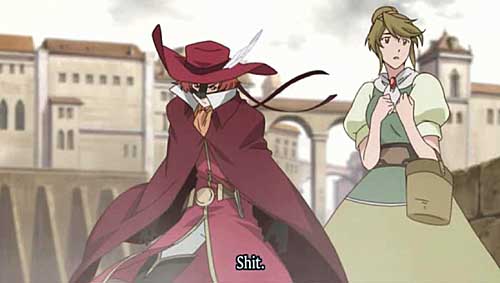I watched the second episode of Lucky Star. It was a little better than the first, but I’m still underwhelmed. I’ve never seen Seinfeld, so I don’t know how valid that comparison is, but it’s clearly inferior to Azumanga Daioh. AD gave us four memorable characters — Chiyo, Osaka, Sakaki and Yomi (six if you count Tomo and Yukari, but I’d like to forget them) — but Lucky Star features only one of any interest, Konata. One good character would be sufficient if the jokes were funny, and maybe they are, but for me they never rise above mildly amusing. Perhaps this is actually a brilliant show and I’m revealing one of my blind spots, but I probably won’t bother watching any more.
Tag: Current viewing
The Crimson Whirlwind

Classic Shakespearean wit
Romeo x Juliet may well be the most insane adaptation of Shakespeare ever made. I’d love to show this to an English literature class; it is so utterly wrong that anyone familiar with the play will be gasping for breath from laughing. I could list some of the more bizarre innovations and infelicities, but I don’t want to spoil anyone’s fun. Watch it and see if you can keep from snorting.
*****
I probably won’t post much for the rest of the week. Barry the flutist, Richard the bodhran player and I will be celebrating Shakespeare’s Birthday with English country dances and other old tunes this Saturday, and I need to practice. If you’re in the Wichita area, you can hear us at the Delano Book Company at 811 W. Douglas between 11 a.m. and noon.
My long-lost sister?

